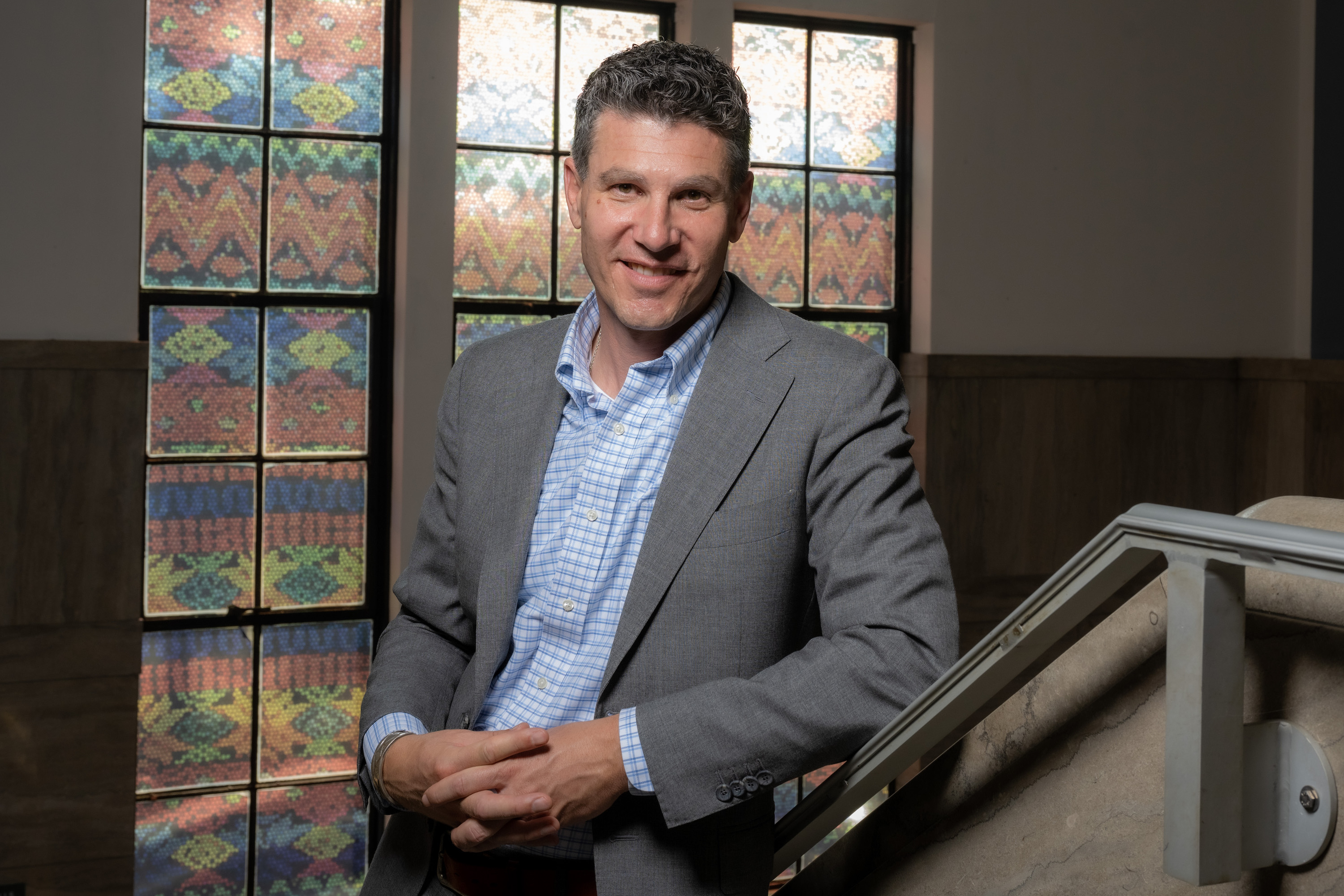“Ask the expert” articles provide information and insights from MSU scientists, researchers and scholars about national and global issues, complex research and general-interest subjects based on their areas of academic expertise and study. They may feature historical information, background, research findings or offer tips.
A quick search of the phrase “21st-century academic museum” will lead you down a rabbit hole of think pieces, questioning everything from a museum’s role to its relevancy to its definition. These are exciting conversations, but what is it about this present moment that makes this practice of rethinking important now? And how is this conversation also unfolding right here at Michigan State University?
Devon Akmon is the director of the MSU Museum. After one year of operating under a reinvigorated mission and vision, Akmon reflects on what it means to be a 21st-century academic museum and the ways in which he and his team seek to move the needle in a bold new direction.
Why do university campuses need museums?
University campuses benefit from having museums as they serve as vital educational resources and social infrastructure. Academic museums offer students and faculty unique, hands-on learning experiences that enhance their understanding in various academic fields. They house diverse collections, from historical artifacts to scientific specimens, providing unparalleled opportunities for in-depth research and study. They also foster a deeper appreciation for scientific discovery, cultural and historical heritage, and the arts and humanities, enriching the intellectual and cultural life of the campus community.
Museums also serve as exciting “third places” where communities can connect socially in fun and surprising ways! For example, the MSU Museum started hosting First Fridays for College Students about a year ago — one evening each month dedicated to special activities and events — and the event typically brings in roughly 150 attendees each month. We have a diverse student population that is eager to forge connections in spaces that provide innovative and unique experiences — we’re here to provide that.
What should academic museums be doing to meet 21st-century expectations?
Academic museums in the 21st century should strive to be dynamic environments integrating innovative technology and fostering interactive experiences. They must embrace new ways of leveraging collections for teaching and learning and provide unique experiential learning opportunities for both students and the public. Collaboration with academic departments is crucial for interdisciplinary research and education and to enhance museums’ relevance to contemporary studies. Emphasizing belonging and diversity in their exhibitions and programs is vital, as well, to ensure a broad spectrum of cultural representation and perspectives.
Academic museums must also engage in co-creation — working alongside students, scholars, local communities, artists and others to develop exhibitions and programs. This approach fosters a sense of shared ownership and relevance, making the museum experience more engaging and inclusive. By serving as vital social infrastructure, academic museums function as key communal spaces where people can gather, interact and engage in cultural and intellectual activities outside of their home and work lives.
Why are we seeing academic museums across the country engage in these conversations about role and relevancy now?
The increased focus on the role and relevancy of academic museums is driven by several factors. The rapid advancement of technology and digitalization has transformed expectations for accessibility and engagement, prompting museums to innovate and adapt. Highlighting the significance of relevancy, there’s a growing recognition of the importance of inclusivity, diversity and representation in cultural institutions, reflecting societal shifts toward equity and social justice. This has led museums to reevaluate their practices and strive for more inclusive narratives.
Furthermore, the changing landscape of education, with a greater emphasis on interdisciplinary and experiential learning, has encouraged academic museums to redefine their educational roles. The impact of global events, such as the COVID-19 pandemic, has also played a role, highlighting the need for museums to be more flexible, resilient and connected to their communities. These factors, combined with the ongoing reassessment of the societal role of cultural institutions, have spurred academic museums to engage in introspection and dialogue about their relevance and future direction.
What will the MSU Museum look like in the future?
The MSU Museum has ambitious goals! We consider ourselves to be a creative collaboratory, aiming to set new standards in the realm of academic museums by collaborating with faculty to convey and amplify groundbreaking research in unexpected and creative ways. We have developed the CoLab Studio, an innovative laboratory within the MSU Museum, which will continue to push boundaries through novel, transient and experimental programs that explore new methods for designing and implementing informal learning experiences and enhancing community engagement.
Through extensive collaboration with the Smithsonian Institution, the museum will also expand its robust array of cutting-edge activities advancing research, generating new knowledge and enhance outreach activities locally and throughout the nation.
Together, and through these efforts, we will continue to forge exciting and informative exhibitions and public programs that explore pressing issues from an interdisciplinary perspective. Our goal is to be at the forefront of rethinking what it means to be a 21st-century academic museum that engages students, faculty, staff and our extended communities!
